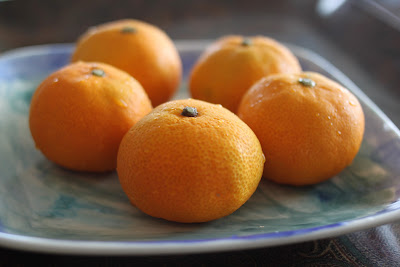by Lindsey Huster
Tis the season of produce. At every street corner, alleyway, and subway exit, mini-food markets have cropped up overnight (or sometimes just at night). These corners, tables, trucks, and sometimes just blankets, readily displaying ripe produce fit for the picking. While a number of fruits and vegetables seemed to have sprung up recently, most of this produce has only now come into season.
One of the best was to support Korea is to support these local stands and markets. While it may be more convenient to shop at a grocery store, buying your produce through these markets benefits buyers and growers alike.
Fruits and vegetables are the most nutritious for eaters at their seasonal peaks. Although it's possible to buy fruits and vegetables out of season at many grocery stories, they are not nearly as tasty. More importantly, however, fruits and vegetables are the most nutritious when they are in season. Out-of-season produce also tends to be more expensive as well, and not nearly as fresh.
Purchasing seasonal produce also ensures that you more likely to buy fruits and vegetables grown in Korea. Although Australia and China account for a significant portion of imported fruits, there are a number of Korean fruits that are grown in Korea.
For example, Jeju Island grows a tangerine that can be found in for most of the year, but hits its seasonal peak during the wintertime. Citrus fruits, including kiwi, grapefruit, mangos, oranges, pineapples and oranges also grow in Jeju, and are in season starting in the spring. Other regions of Korea grow apples, pears, persimmons and melons. For the summer months, the Korean yellow melon, watermelon are in season. Other fruits like Korean grapes and persimmons, will peak later in the fall.
For the most part, Korea grows many of its vegetables. The main vegetable crops include white cabbage and radishes, which can be found almost year round. Cucumbers are known as a summer vegetable, while carrots and potatoes start growing once it is spring.
If consumers fail to take advantage of Korean produce, however, Korea will continue to lose farmers and give way a stronger reliance on expensive imports. In 1963 the majority of South Koreans were farmers; nearly sixty-three percent of the population lived in rural areas. With the economic boom transforming much of Korea into an industrialized and urbanized land, the number of farmers has dropped to well under 20 percent. The enormous growth of urban areas has also led to a significant depletion of farmland.
With the increase of population as well as larger Korean incomes, there is an even greater demand of food. As a result, South Korea has begun to rely heavily on imported foods. In 2008, Korea imported $120 million in fresh vegetables from the United States. Although the palates of Koreans and the increase of expatriates have also impacted imports, consumers should continue to first rely on Korean produce. If growers continue to lose business to imported fruits and vegetables, fruit growers and farmers will lose their jobs.
Ultimately, eating seasonally and locally is the best deal for everyone. Consumers have the opportunity to purchase the healthiest, freshest and cheapest produce. On the other end of the spectrum, growers and farmers are supported through local consumers. So this summer, and every season after this, should be a time to take advantage of the seasonal offerings of Korean produce.
Lindsey Huster is a writer who usually hails from Chicago. She enjoys listening to music,wearing cardigans and generally anything vegetarian. Send her an e-mail here: Lindsey Huster
Food for Thought: Eat locally, eat seasonally, and support Korea
June 29, 2010
Search This Blog
About
Sneak Peak of Our Tours!
Seoul City Tours
Ride Thru Korea
Group Tours
Family Tours
Beautiful Nightview
Gyeongju Tours
Most Popular

Seoul Eats Dinner Giveaway for Tartine's Beef Pot Pie Set Menu
December 09, 2009

5 of the Best Jajangmyeon 짜장면 in the City of Seoul, Korea
April 10, 2015

Win a 50,000 won Bar Tab from Beer O'Clock in Sincheon
January 11, 2010
Categories
Popular Posts

Seoul Eats Dinner Giveaway for Tartine's Beef Pot Pie Set Menu
December 09, 2009

Win a 50,000 won Bar Tab from Beer O'Clock in Sincheon
January 11, 2010

5 of the Best Jajangmyeon 짜장면 in the City of Seoul, Korea
April 10, 2015
Most Popular

Seoul Eats Dinner Giveaway for Tartine's Beef Pot Pie Set Menu
December 09, 2009

5 of the Best Jajangmyeon 짜장면 in the City of Seoul, Korea
April 10, 2015

Win a 50,000 won Bar Tab from Beer O'Clock in Sincheon
January 11, 2010







1 Comments
how much longer do we have to endure these no-brainer posts from lindsey huster?
ReplyDeleteThank you for commenting!